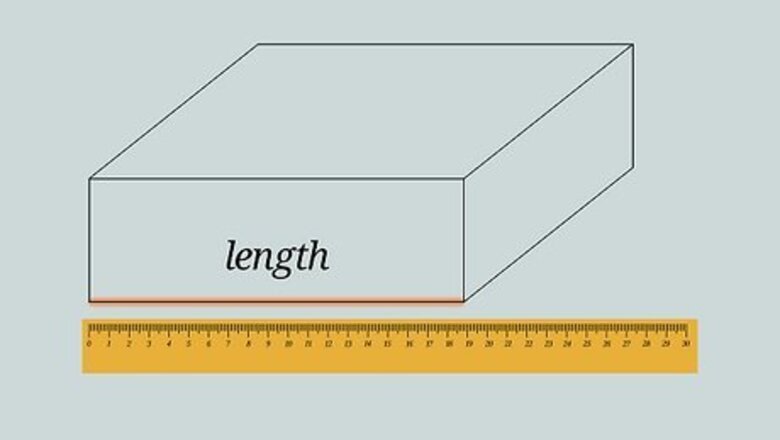
views
- Measure the longest side of the package that has a flap attached to it for the length. Measure the other side that has a flap to find the width.
- To find the height of the package, measure the box from top to bottom.
- To get the volume, or cubic size, of the box, multiply the length, width, and height of the box in inches or centimeters.
Measuring the Dimensions of a Package
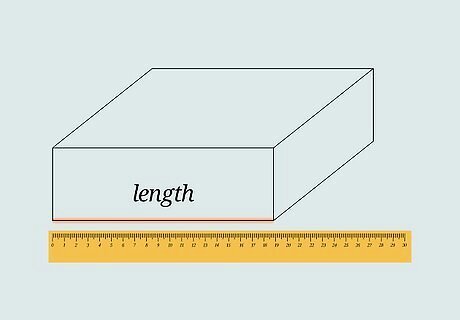
Measure the longest side of the package that has a flap to find the length. Identify the longest side of the package that has a flap attached to it. Hold a ruler or tape measure up to the edge and read the length of the box from one end to the other. Round your measurement to the nearest 1 in (2.5 cm) or ⁄2 in (1.3 cm). Jot down the measurements on a scrap piece of paper so you can refer to them later. Many shipping services only handle packages up to a certain size, which is typically noted in whole inches or centimeters. The actual length of your package might vary by ⁄8 in (0.32 cm).
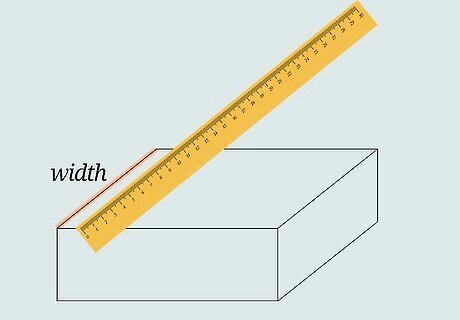
Measure the other side with a flap to find the width. The width is the distance from one “wall” of the shortest side of the box to the opposite wall. Stretch your ruler or tape across the package from edge-to-edge, then round to the nearest 1 in (2.5 cm) or ⁄2 in (1.3 cm). The actual width of your package might vary by ⁄8 in (0.32 cm).
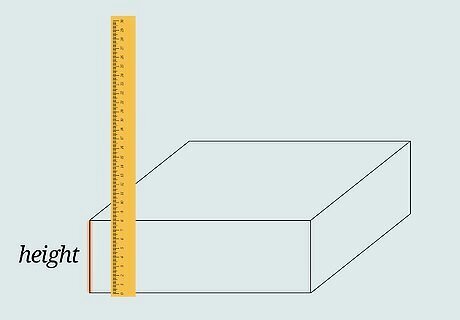
Measure the side of the box that you don’t close up for the height. Measure the standing side of the box that doesn’t have a flap attached to one side to record the height. Round the box’s height dimension to the closest 1 in (2.5 cm) or ⁄2 in (1.3 cm). The actual height of your package might vary by ⁄8 in (0.32 cm).Tip: If your package has an irregular shape, measure it the same way you would as if it were in a rectangular box, taking the length, width, and height from each of the box’s extreme points.
Calculating Volume & Dimensional Weight
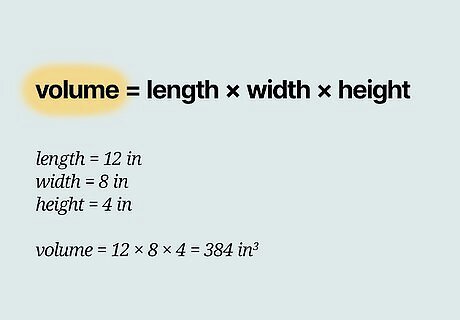
Multiply the length, width, and height of the box to find its volume. Volume is the same as cubic size, which indicates the amount of space inside the box. If you have a package with a length of 12 inches (30 cm), a width of 8 inches (20 cm), and a height of 4 inches (10 cm), its volume, or cubic size, would be 384 cubic inches (6,290 cm). Or if you have a box with a length of 12 inches (30 cm), a width of 3 inches (7.6 cm), and a height of 17.5 inches (44 cm), its volume would be 630 cubic inches (10,300 cm).

Divide the volume by the shipping carrier’s divisor to find its dimensional weight. Many major shipping companies use the dimensional (dim) weight to calculate shipping costs. The dimensional weight is based not only on the package’s size but its destination and shipping carrier. Contact your preferred shipping carrier to find out their specific divisor. Here are the divisors (for Imperial measurements) for a few of the common carriers in the U.S.: FedEx: For U.S., Puerto Rico, or international shipments, divide the cubic size by 139. UPS: Divide the cubic size by 139 for Daily Rates and 166 for Retail Rates. USPS: If the volume of the package goes over 1,728 cubic inches (28,320 cm), divide the cubic size by 166 and round up to the next whole number. For example, if the volume of your box is 384 cubic inches (6,290 cm) and you’re shipping with FedEx (139), its dimensional weight is 2.76 cubic inches (45.2 cm). To find the dimensional weight of an irregularly-shaped package, multiply the volume by an adjustment factor of 0.785, then divide the answer by the shipping carrier’s divisor. Keep the dimensional weight exact to give you a rough estimate of the box’s shipping costs—try to avoid rounding.
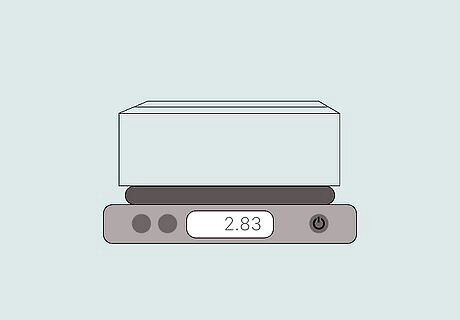
Weigh your package on a postage scale to determine its actual weight. Place your package on the scale and wait for it to display a reading. Record the weight without rounding it up because you’ll compare it with the package’s dimensional weight to see how much you can expect to pay for shipping. You can request to have your package measured at the post office if you don’t own a postage scale.Tip: Having your own postage scale can save you valuable time and energy if you’re a frequent shipper. It’s possible to buy a good postage scale online for as little as $20-30.
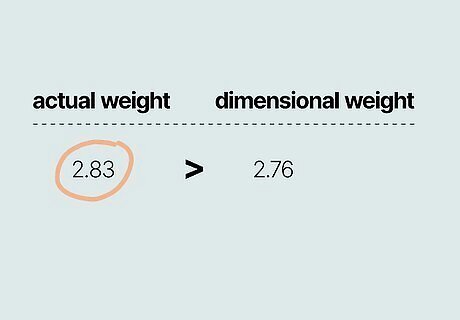
Compare your package’s actual weight to its dimensional weight. If the dimensional weight is greater than the actual weight, you’ll pay the dimensional weight price. Most shipping carriers charge whichever of the two weights is greater to maximize their profits per shipment. It’s important to know the actual weight of your package as well as its dimensional weight since the dimensional weight is only an estimate, not a precise measurement.
Finding the Girth and Total Size of a Package
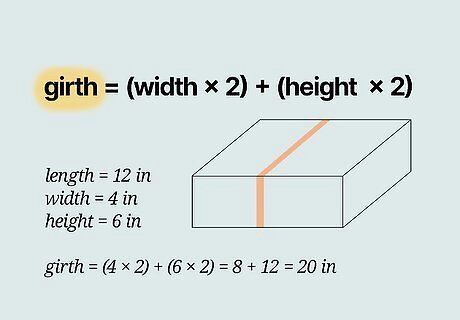
Double the width and height and add them together to find the girth. After you find the length, width, and height of the package, multiply the width and height dimensions by 2. Then, add the doubled width and doubled height together. The number you get is the girth of the box. If your box is 12 inches (30 cm) long, 4 inches (10 cm) wide, and 6 inches (15 cm) tall, doubling the width and height would give you 8 inches (20 cm) and 12 inches (30 cm). When you add 8 inches (20 cm) and 12 inches (30 cm), the girth is 20 inches (51 cm). The term “girth” refers to the total distance around the thickest part of the box. This only applies to the area encircling the shortest side of the package, so the length isn’t required.
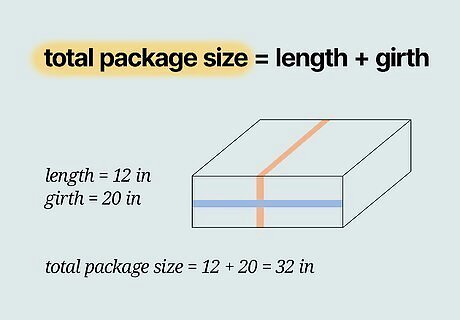
Add the combined length and girth to get your total package size. When shipping ground packages, you might be asked to provide the overall size of the package. To do this, simply add the length and girth measurements together. If you add a length of 12 inches (30 cm) to a girth of 20 inches (51 cm), you’d get a total size of 32 inches (81 cm). If the package you’re shipping is larger than 105 inches (270 cm) in combined girth and length, you may be charged an additional special handling fee. The maximum size for most packages is 130 inches (330 cm). The maximum weight is 70 pounds (32 kg) for international packages and 50 pounds (23 kg) for U.S. ground packages.




















Comments
0 comment